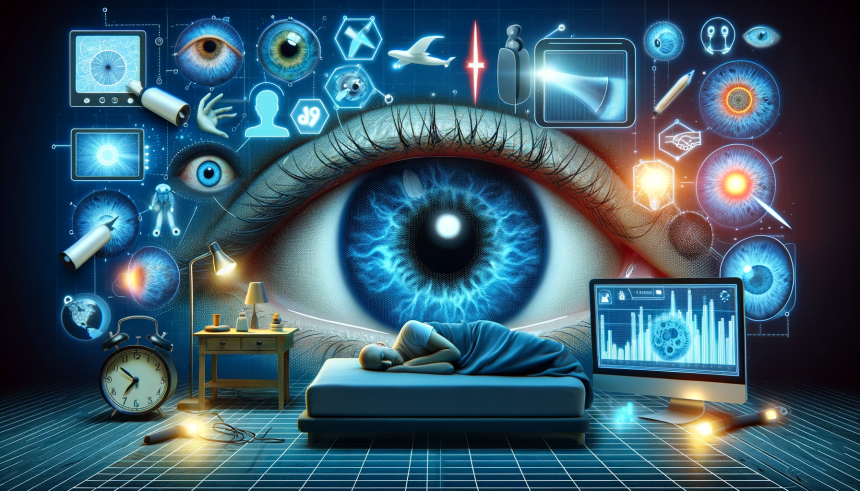In an era where the glow of screens is as constant as the stars, a disquieting correlation surfaces: the connection between night-time artificial light exposure and the heightened risk of age-related macular degeneration (AMD). This eye condition, predominantly seen in the twilight of life, stands as a principal cause of vision impairment. Emerging research points to our era’s luminous lifestyle as a potential accelerator of this risk.
Peeling Back the Layers of the AMD Enigma
AMD deteriorates the macula, the retina’s central region crucial for sharp, straight-ahead vision. Though its etiology is a complex tapestry weaving genetic threads with environmental factors, the spotlight now falls on artificial nocturnal light exposure.
A Tale of Light and Eyes
The human eye, a masterpiece attuned to the rhythm of natural light, finds itself out of sync in our artificially illuminated world. Night-time exposure to artificial light, especially the pervasive blue light from digital screens and LEDs, disrupts natural sleep-wake cycles. This dissonance impacts melatonin synthesis, a hormone vital for sleep and cellular repair, including ocular cells.
The Acceleration of AMD Through Artificial Light
The pathway through which artificial light amplifies AMD risks is a story of deep penetration and disrupted rhythms:
- The Blue Light Invasion: Short-wavelength, high-energy blue light delves deeper into the eye than other hues, potentially wreaking havoc on the macula.
- The Rhythmic Disruption: Artificial light at night throws our circadian rhythms, the conductors of various biological symphonies, into disarray, impairing the eyes’ nightly repair cycle.
- The Onslaught of Oxidative Stress: Intense, prolonged exposure to artificial light sources escalates oxidative stress in the retina, hastening degenerative alterations and amplifying AMD risk.
Strategies to Combat the Risks
To navigate these night-time perils, consider the following strategies:
- Curbing Screen Time: Especially as evening descends, limit screen exposure. Blue light filters can be allies in this endeavor.
- Embracing Softer, Warmer Illumination: At night, choose lighting that leans towards warmer hues, reducing blue light exposure.
- Safeguarding Your Eyes: Consider donning glasses designed to block blue light when engaging with digital screens.
- Prioritizing Regular Eye Check-ups: Consistent eye exams are crucial in early AMD detection and management.
In Conclusion
The interplay between night-time artificial light exposure and increased AMD risk unveils a lesser-seen cost of modernity. By adopting healthier nocturnal lighting habits, we can shield our eyes, potentially curbing AMD risk. As we delve deeper into the impact of our evolving environmental conditions on health, the importance of adapting our lifestyle for overall well-being becomes ever more apparent.








